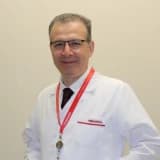Indirect inguinal hernia repair conducted with single conventional port intracorporeal conventional equipment‑endoscopic surgery

Purpose Laparoscopic or laparoscopy-assisted inguinal hernia repair (IHR) can be performed using one port plus two stab wounds. We herein present our experience with laparoscopic IHR conducted using a single conventional port and a single working instrument. Methods The records patients who underwent single conventional port intracorporeal IHR during November 2013–December 2018 were evaluated. The main outcome measurements were patient’s demographic characteristics, hernia side, presence of incarceration, operative time, and complications. Results A total of 132 inguinal hernias (52 right, 40 left, and 20 bilateral) were repaired in 112 patients (76 boys, 36 girls). The mean ages of the patients were 69.8±53.4 months (3 months to 17 years). In six patients, contralateral processus vaginalis was found to be patent during operation. Incarcerated inguinal hernia was present in two patients. Mean operative time was 17.9±3.8 min (9–30 min) in unilateral hernias and 28.9±6.5 min (24–45 min) in bilateral hernias. No intraoperative and postoperative complications were encountered. The mean hospital stay of the patients was 8.8±5.0 h (4–36 h). Postoperative follow-up was 16.5±5.1 months (6–24 months). No recurrent inguinal hernias were detected during follow-up. Conclusion Single conventional port intracorporeal IHR obviates additional stab wounds. Additionally, present technique eliminates the risk of skin puckering, subcutaneous granuloma, infection, nerve, and muscle damage development induced by the subcutaneously placed knot in laparoscopy-assisted IHR. Single conventional port intracorporeal IHR in children is a feasible and safe operative technique with low complication rates.
